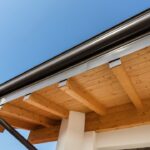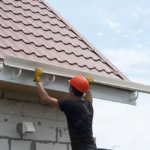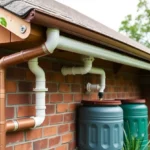Have you ever wondered what is a hip roof? It’s here with detailed insights and delight awaiting homeowners. This tremendous roofing style is the latest in technology, approved by architects and construction experts alike.

Introduction to Hip Roofs
A hip roof is not just any roof. It is a style of roof where all sides slope downwards towards the walls, often with a gentle pitch, making it not only aesthetically pleasing but also functionally superior in various weather conditions.
The Structure of a Hip Roof
Hip roofs involve a simple yet elegant design where all sides have a gentle slope downwards. Unlike gable roofs, they do not have flat sides, providing better wind resistance.
History of Hip Roofs
The hip roof design has been used for centuries, evolving from ancient construction techniques to today’s modern architectures.
Materials Used in Hip Roofs
When constructing a hip roof, materials such as shingles, metal, and even clay tiles are commonly used, offering durability and style.
Benefits of Choosing a Hip Roof
- Improved Stability
- Increased Durability
- Enhanced Aesthetic Appeal
The strength of the< b>hip roof design is not just in looks; it offers a terrific ability to withstand both high wind forces and heavy snowfall.
Functional Advantages
Because of its slope on all sides, a hip roof manages rain and snow better, reducing water damage risks and increasing your homes longevity.
Comparing Hip Roofs with Other Roofing Styles
While exploring what is a hip roof, comparing it to other styles like gable and mansard can provide insight into why many builders prefer hip roofs.
Gable vs Hip Roof
Gable roofs offer a simple and efficient design, but lack the wind resistance that hip roofs provide.
Mansard Roof Comparison
Mansard roofs offer aesthetic elegance, yet lack the hip roof’s cohesive stability in harsher climates.
Installation and Maintenance of Hip Roofs
Installing a hip roof can be a complex process due to its intricate design, demanding precise skills for quality installation.
Step-by-step Installation Guide
Consider hiring professionals to ensure the roof is built to last, especially when exploring durable choices.
Maintaining Your Hip Roof
Regular maintenance ensures longevity; inspecting for leaks, clearing debris, and reviewing the structure annually guarantees its performance.
Cost Considerations for Hip Roofs
Understanding costs is key, with hip roofs generally costing more due to their increased material and labor demands. It’s a long-term investment.
Factors Affecting Prices
- Material Choices
- Roof Size and Complexity
- Geographical Location
Environmental Impact of Hip Roofs
Choosing eco-friendly materials for your hip roof can reduce environmental impact and contribute positively to sustainability.
Recyclable Materials
Some roofing materials used in hip roofs are recyclable, promoting sustainability in construction.
Energy Efficiency
The strategic design and material selection can increase energy efficiency, aiding in home temperature regulation and reducing energy bills.

Frequently Asked Questions
- What is the main advantage of a hip roof?
The main advantage is its stability and resistance to harsh weather conditions. - How does a hip roof manage water run-off?
Because of its slopes on all sides, water run-off is efficiently managed, preventing accumulation. - Are hip roofs more expensive than gable roofs?
Generally, yes, due to the increased materials and labor required for installation.
TPO roofing is another option that emphasizes longevity and durability, much like the advantages of hip roofs.
This article contains affiliate links. We may earn a commission at no extra cost to you.








